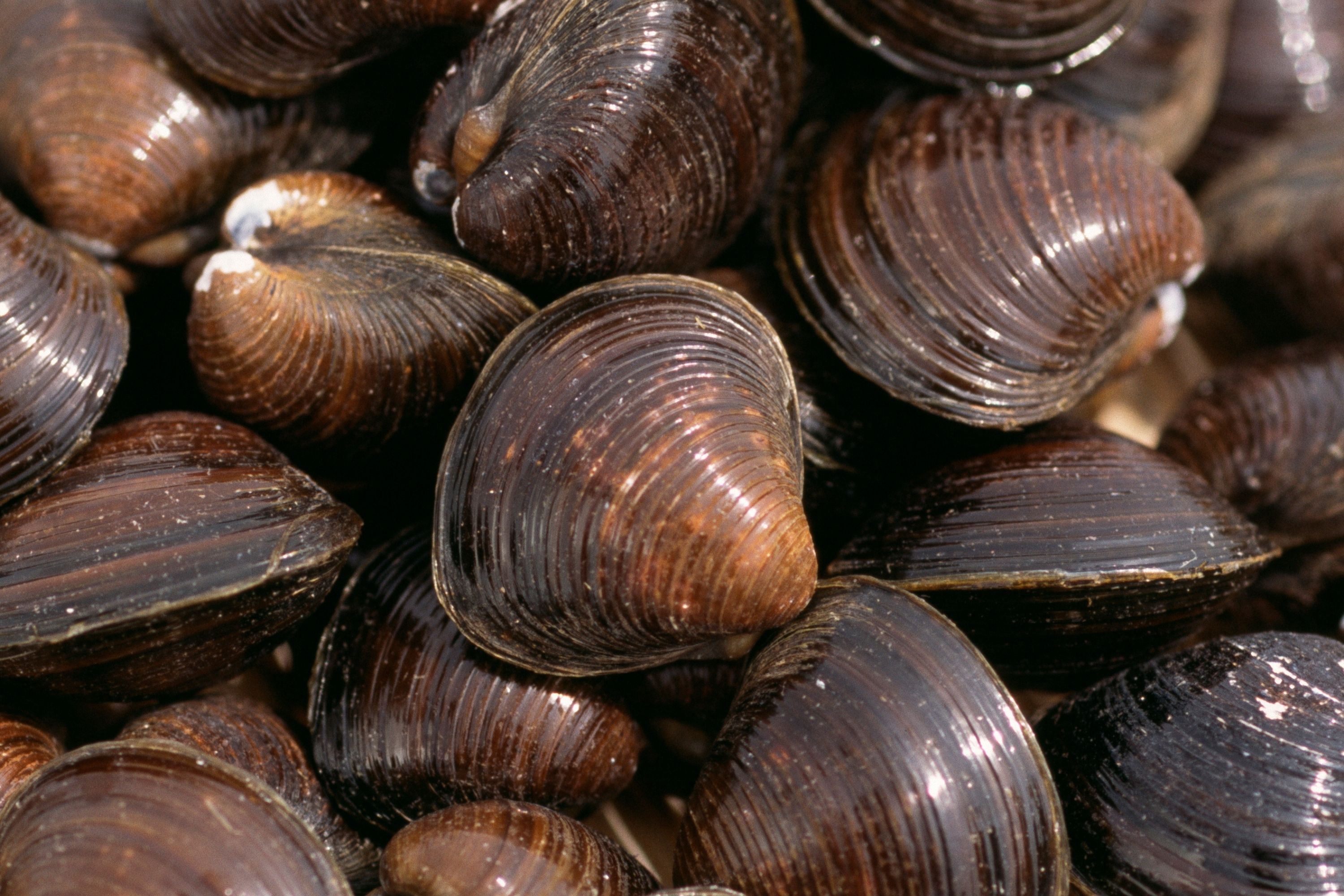Asian Clam
(Corbicula fluminea)

Description
Corbicula fluminea is a species of freshwater clam native to eastern Asia which has become a successful invasive species throughout North America, South America, and Europe. Corbicula fluminea is commonly known in the west as the Asian clam or Asiatic clam. In Southeast Asia, C. fluminea is known as the golden clam, prosperity clam, pygmy clam, or good luck clam. Corbicula have had global success as an aquatic invasive species, having been introduced to a novel range including South America, North America and Europe. Human industrial activity, such as transport of larvae via ballast water in container ships, has been noted in the literature as a chief invasion vector. A market exists for Asian clams for human consumption in Japan, China, and other countries in the region. According to the United States Geological Survey, C. fluminea is likely to continue to expand its North American range until it reaches the maximum extent of its low temperature tolerance. The periostracum of the shell is normally yellow-green, with concentric growth rings of the prismatic layer visible through the proteinous outer layer. The periostracum can flake, allowing the white prismatic layer to show through. The shells exhibit a light purple nacre on the inside. Right after reaching maturity, these clams produce eggs, followed by sperm. Throughout adult life, Corbicula is a self-fertile simultaneous hermaphrodite which can broadcast spawn up to 570 mucoid larvae per day per individual, and more than 68,000 per year per individual. Larvae are ~200 microns in length when discharged from an adult and dispersed through water until becoming sessile adults. Adults can reach a length of about 5 cm. Corbicula fluminea is an active suspension feeder, and in the process of feeding by pumping water through its body (as well as feeding on interstitial sedimentary material via pedal feeding when suspended grazing items are limited). They feed primarily on phytoplankton (algae), which they actively filter out the water, but may pedal feed on organic matter in the sandy or muddy bottoms of streams, lakes, or canals where the clam establishes a population. This clam originally occurs in freshwater environments of Eastern Asia, including Russia, Thailand, the Philippines, China, Taiwan, Korea, and Japan. C. fluminea also occurs naturally in freshwater environments of Africa.
Taxonomic tree:







